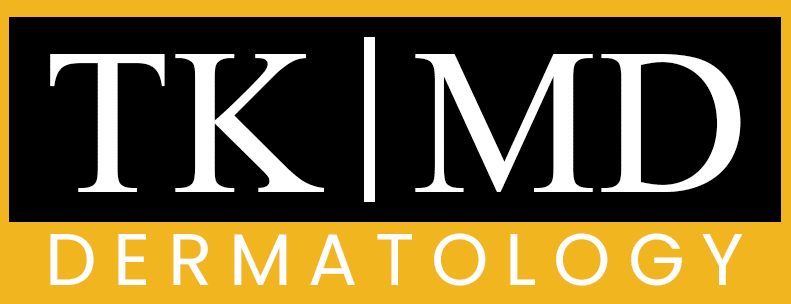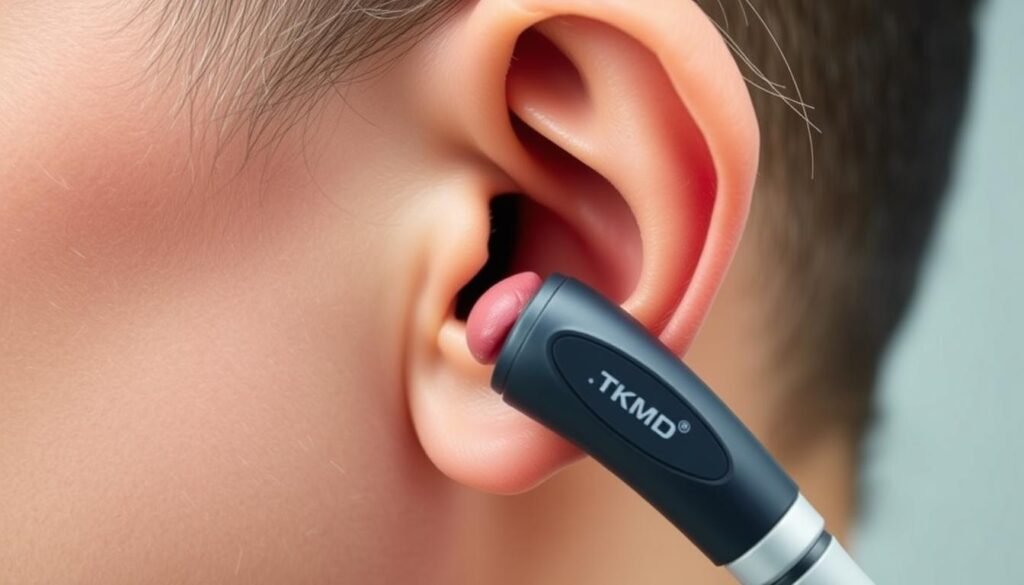Keloids on the ear can be particularly bothersome, not just aesthetically, but also due to the discomfort they may cause. A keloid is a type of raised scar that can develop after an injury, and when it appears on the ear, it can be especially challenging to treat.
Seeking professional care for keloid scar removal is crucial for effective treatment. Our clinic specializes in providing personalized care for various types and sizes of keloids, ensuring that each patient receives the most appropriate treatment for their condition.
With a team of experts in scar management, we offer comprehensive services and treatment options tailored to each individual’s needs. Understanding the importance of qualified care, we are committed to helping you achieve the best possible outcome.
Key Takeaways
- Keloids on the ear require professional treatment for effective removal.
- Our clinic offers specialized care for keloid removal.
- Personalized treatment plans are available for various keloid types and sizes.
- Expertise in scar management ensures comprehensive care.
- Comprehensive services and treatment options are tailored to individual needs.
Understanding Ear Keloids
Understanding the nature of ear keloids is crucial for effective treatment and management. Ear keloids are raised, thick scars that can develop after trauma to the ear, such as piercings or surgical procedures.
Causes and Triggers
Keloid formation is often associated with genetic predisposition, and certain triggers can cause their development. Common triggers include trauma to the ear, such as piercings, burns, or surgical incisions. The exact biological process behind keloid formation involves the abnormal healing of skin tissue, leading to the growth of excess scar tissue.
Symptoms and Concerns
Ear keloids can be itchy, tender, or painful. They are typically larger than the original wound and can continue to grow over time if left untreated. The appearance and texture of keloid tissue on the ear can vary, but they are often raised and firm to the touch.
| Characteristics | Keloid Scar | Regular Scar |
|---|---|---|
| Appearance | Raised, thick, and sometimes red | Flat, thin, and usually pale |
| Growth Pattern | Can grow beyond the original wound boundaries | Generally stays within the original wound boundaries |
| Symptoms | May be itchy, tender, or painful | Usually asymptomatic |
Understanding these differences is key to identifying and addressing ear keloids effectively. Proper diagnosis and treatment can significantly improve outcomes for individuals affected by these challenging skin growths.
Why Specialist Care Matters for Ear Keloid Removal
Specialist care is essential for effective ear keloid removal, ensuring the best possible outcomes. Ear keloids can be challenging to treat due to their complex nature and tendency to recur.
Keloid scars are not just a cosmetic issue; they can also cause discomfort and emotional distress. The complexity of keloid scars often requires specialized knowledge and techniques that go beyond general medical practice.
Risks of Improper Treatment
Improperly treated keloids can lead to unsatisfactory outcomes, including notched earlobe margins and visible stitch marks. Such complications can be avoided with skilled surgical techniques and timely removal of stitches.
Benefits of Expert Intervention
Expert intervention offers several benefits, including the use of sterile conditions to prevent infection and specialized techniques to prevent keloid recurrence. Specialists stay updated with the latest research and techniques in keloid management, ensuring personalized and effective treatment plans.
| Aspect | General Practitioner | Specialist Care |
|---|---|---|
| Expertise | Limited knowledge of keloid treatment | In-depth understanding of keloid management |
| Treatment Approach | One-size-fits-all | Personalized treatment plans |
| Complication Rate | Higher risk of complications | Lower risk due to skilled techniques |
Our Ear Keloid Removal Services

Our specialized ear keloid removal services at Rejuvence Clinic are tailored to address the unique needs of each patient. With a focus on delivering exceptional care, our team is committed to ensuring that you receive the best possible treatment for your ear keloid concerns.
Comprehensive Evaluation Process
During your consultation with Dr. Kirwan, you’ll discuss your expectations, medical history, and any prior procedures. This thorough evaluation process helps us understand your needs and develop an effective treatment plan. Dr. Kirwan will conduct an examination and take photos to illustrate the planned surgical technique, the resulting scar, and the potential benefits.
Personalized Treatment Plans
At Rejuvence Clinic, we create individualized treatment plans based on each patient’s specific needs. Our team considers both functional and aesthetic concerns when planning treatment, ensuring that you receive a comprehensive solution to your ear keloid issues. By leveraging our experience and state-of-the-art office facilities, we can achieve optimal results that enhance the appearance of your ear.
For more information on ear keloids and their treatment, you can visit our page on ear keloids. Our team is dedicated to providing you with the care and support you need throughout the removal process, ensuring a smooth and successful treatment experience.
Treatment Options for Ear Keloids
For individuals dealing with ear keloids, a range of treatment options exists, from non-invasive procedures to surgical interventions. The choice of treatment depends on the size, location, and characteristics of the keloid, as well as the patient’s overall health and preferences.
Steroid Injections are a common approach for managing ear keloids. By injecting steroids directly into the scar tissue, it’s possible to reduce inflammation and flatten the keloid, making it less noticeable. This method requires precision to avoid complications such as skin breakdown or fat atrophy.
Steroid Injections
Steroid injections are particularly effective for hypertrophic or keloid scars. The injections help in reducing the size and inflammation of the keloid, providing relief and improving appearance.
Surgical Excision
Surgical excision involves removing the keloid surgically. This method is often combined with advanced wound closure techniques to minimize the risk of recurrence or widening of the scar. It’s a more invasive option but can be highly effective when performed by an expert.
Advanced Combination Therapies
Advanced combination therapies offer a comprehensive approach by combining different treatment modalities. This could include surgical excision followed by steroid injections or other adjunctive treatments. Such therapies can provide better outcomes by addressing the keloid from multiple angles.
The following table summarizes the treatment options for ear keloids:
| Treatment Option | Description | Benefits |
|---|---|---|
| Steroid Injections | Injecting steroids into the keloid to reduce inflammation and size | Non-invasive, reduces keloid size and inflammation |
| Surgical Excision | Surgical removal of the keloid | Can be highly effective, especially with advanced wound closure techniques |
| Advanced Combination Therapies | Combining different treatments (e.g., surgery and steroid injections) | Offers comprehensive treatment, potentially better outcomes |
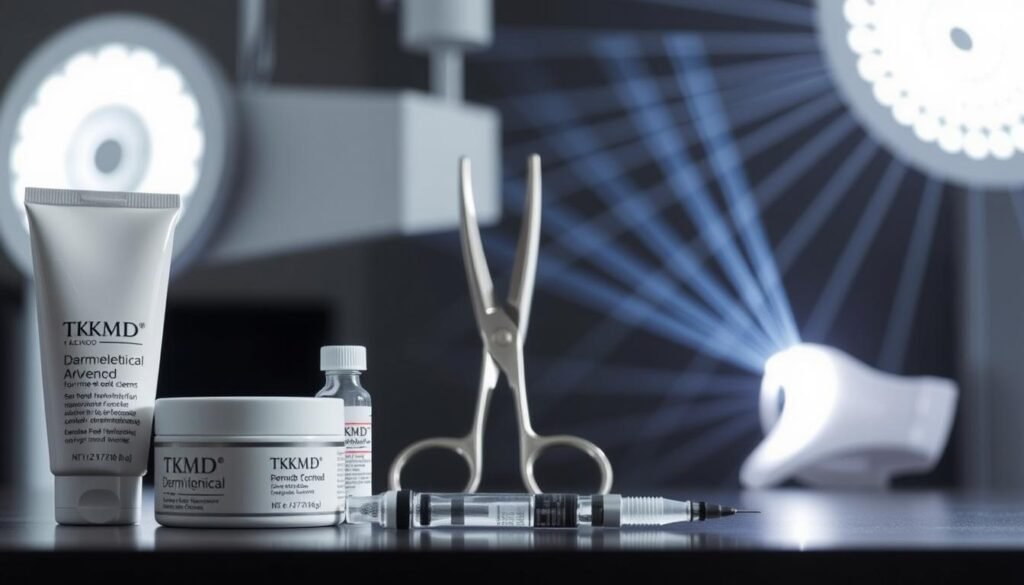
Each treatment option has its benefits and limitations. The choice of treatment is personalized based on the individual case, considering factors such as the keloid’s characteristics and the patient’s health status.
The Ear Keloid Removal Procedure
The process of ear keloid removal involves several steps, from initial consultation to post-procedure care. Understanding what to expect can help alleviate concerns and ensure a smooth experience.
Before Your Appointment
Preparation is key to a successful ear keloid removal. Patients should come prepared to their appointment with a list of questions and any relevant medical history. This information helps in tailoring the treatment plan to the individual’s needs.
During the Procedure
The keloid removal procedure typically involves surgical excision, sometimes combined with other therapies like steroid injections to minimize the risk of recurrence. The time required for the procedure can vary depending on the size and complexity of the keloid.
Post-Procedure Care
After the procedure, patients can expect some minor bleeding for up to 24 hours. It’s crucial to follow post-operative instructions carefully to ensure optimal healing and minimize the risk of trauma to the area. Dr. Kirwan recommends using sunblock and a silicone-based scar cream to protect the area and prevent keloid scar formation.
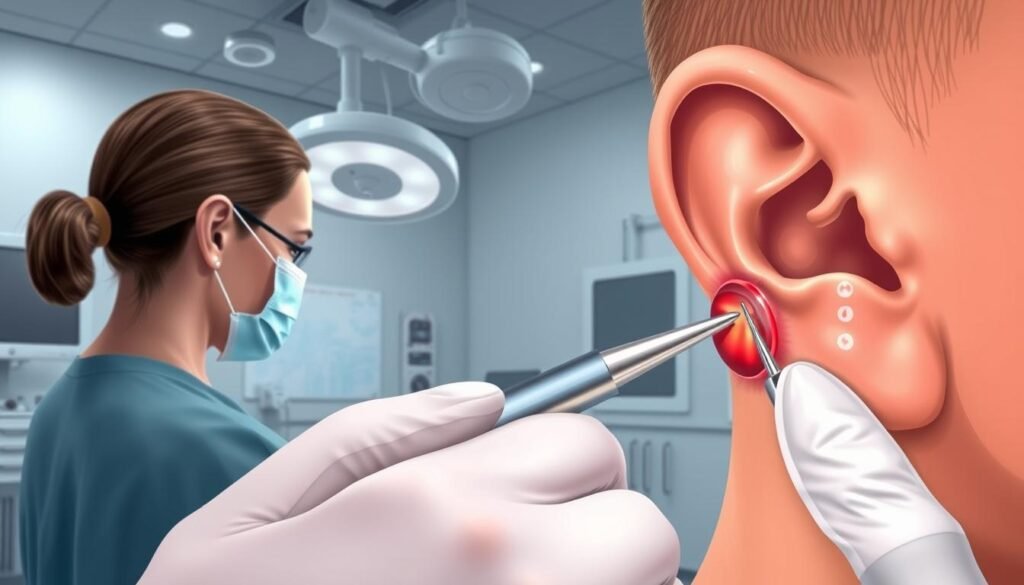
- Return to work within 24 hours
- Avoid contact sports for three weeks
- Follow post-operative instructions for a smooth recovery
Recovery and Results
Understanding the recovery process is essential for patients who have undergone ear keloid removal. This process involves several stages, from immediate post-procedure care to long-term healing.
What to Expect During Healing
During the healing process, patients may notice that the treated area is red and slightly raised. This is a normal part of scar formation, which can take up to a year to mature. Proper care, including the use of products like SkinMedica Scar Recovery Gel, can enhance the recovery outcome.
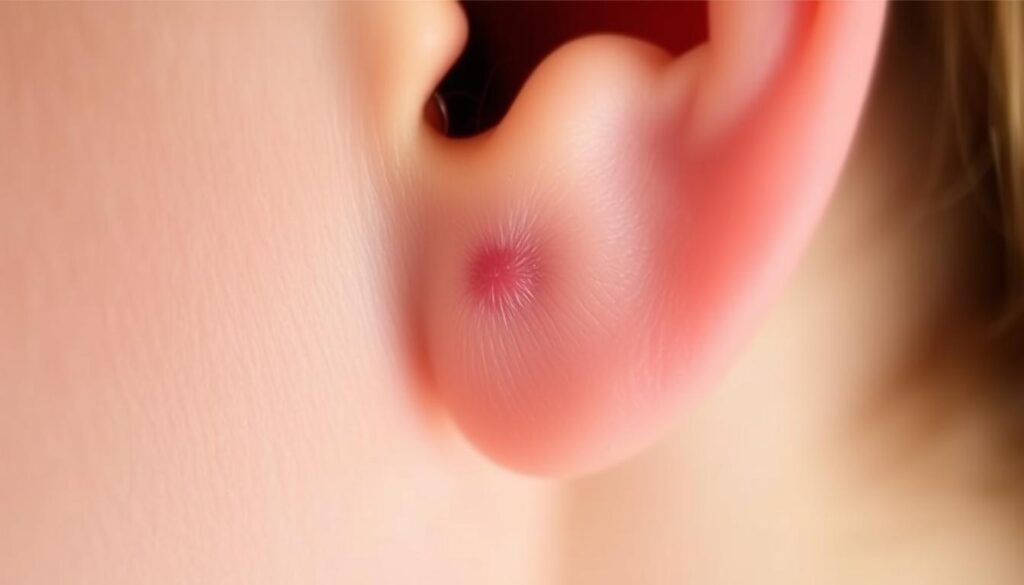
| Healing Stage | Timeline | Characteristics |
|---|---|---|
| Initial Healing | 0-3 months | Redness, swelling |
| Scar Maturation | 3-12 months | Gradual flattening and fading of scar |
Long-Term Outcomes and Prevention
The results of ear keloid removal can be long-lasting, provided that proper skin care and protection measures are taken. Preventing keloid recurrence involves avoiding irritation to the area and using recommended topical treatments. Follow-up treatments may be necessary to achieve optimal results.
By understanding the recovery process and adhering to post-procedure care instructions, patients can achieve the best possible outcome and minimize the risk of keloid recurrence.
Why Patients Choose Our Ear Keloid Removal Services
Patients trust our expertise for ear keloid removal because of our proven track record and commitment to staying current with the latest treatment advances. Our team, led by Dr. Laurence Kirwan, a Board Certified Plastic Surgeon, offers exceptional care tailored to each patient’s needs.
Expert Credentials and Experience
Dr. Kirwan’s international experience and recognition as one of the top 20 Plastic Surgeons worldwide by Vogue magazine underscore his expertise. Our surgeons are committed to providing personalized treatment plans, ensuring the best possible outcomes for keloid removal.
| Credential | Description | Benefit to Patients |
|---|---|---|
| Board Certification | Ensures the highest standards of surgical expertise | Trustworthy and skilled care |
| International Experience | Broadens understanding of various techniques and treatments | Access to a wide range of effective treatments |
| Personalized Care | Tailors treatment to individual patient needs | Improved outcomes and patient satisfaction |
Patient Success Stories
Our patients’ success stories highlight the effectiveness of our ear keloid removal services. With a focus on both physical and emotional healing, we provide comprehensive care that addresses all aspects of keloid treatment.
“The care I received was exceptional. The team was professional, and the results exceeded my expectations.”
Schedule Your Ear Keloid Consultation Today
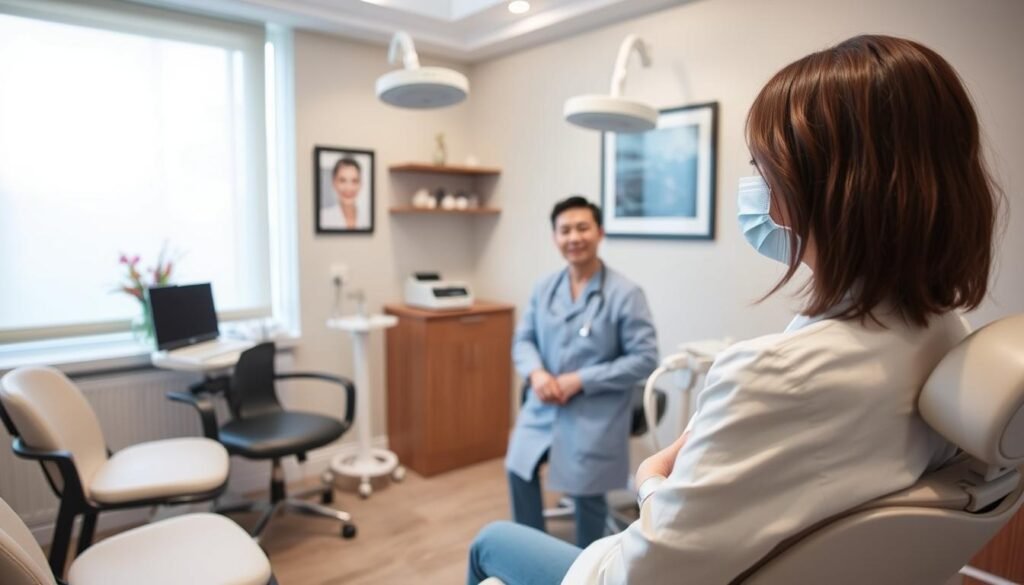
Transform your ear’s appearance with our expert keloid removal services. Ready to restore your earlobes and regain confidence? Schedule a consultation with Kirwan Plastic Surgery today by calling (475)250-1581.
During your initial consultation, our expert will evaluate your ear keloid and discuss personalized treatment plans. We encourage you to bring any questions or concerns you may have. Our commitment is to provide you with comprehensive care, from the initial assessment through to the removal process and aftercare.
